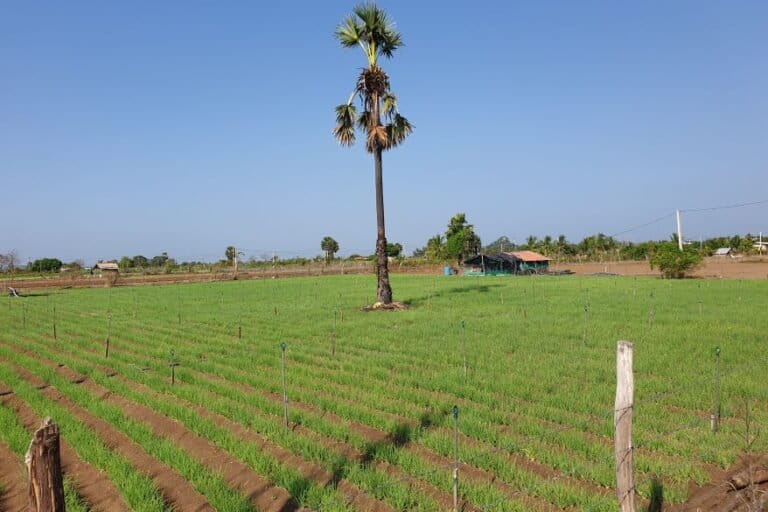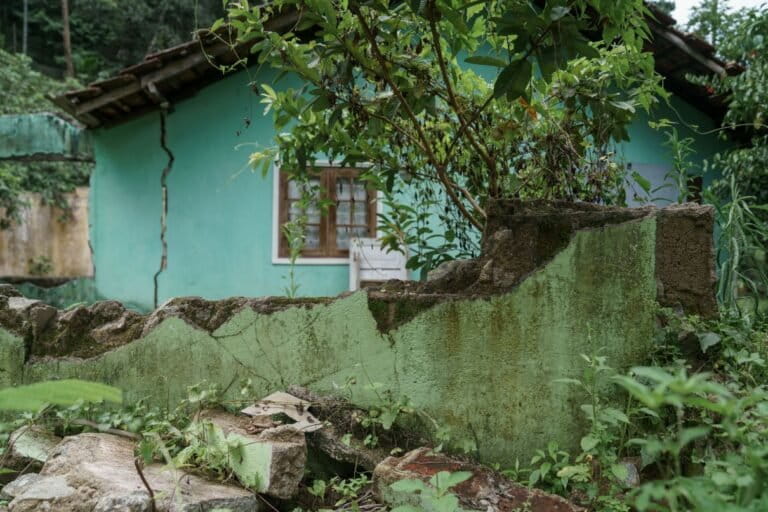- In a landscape of interconnected and mutually compounding risks, climate change has emerged as a key risk factor for Sri Lanka, specifically for vulnerable sectors and groups.
- Risk management frameworks need to acknowledge and incorporate these emerging risks. While Sri Lanka already has risk management mechanisms and instruments in place, there are opportunities to scale up these mechanisms, close existing gaps and mobilize additional means of implementation.
- Sri Lanka is in the process of strengthening its national environment policy related to climate change, including through global and international processes, which could remove constraints and help enhance risk management in the country.
- Key areas for improving and future-proofing Sri Lanka’s risk management framework include awareness creation, education, and the wider enabling environment; multi-stakeholder collaboration and decision-making processes; leveraging new and innovative risk management instruments; and connecting the national to the international level, such as the U.N. climate change convention negotiations or the Global Shield initiative.
In the 21st century, Sri Lanka finds itself faced with an increasingly complex and interconnected landscape of risks that are often covariate and mutually compounding. Climate change — along with environmental degradation, biodiversity loss, pollution, supply chain disruptions and other economic challenges — is one of the primary causes of risks that affect all sectors and levels, from individual households to entire industries.
The Sixth Assessment Report published by the Intergovernmental Panel on Climate Change (IPCC), the international body for assessing climate science, states that “without rapid, deep and sustained mitigation and accelerated adaptation actions, losses and damages will continue to increase … and will disproportionately affect the most vulnerable populations.” The report also identifies South Asia as one of the “global hotspots of high human vulnerability”in a warming world and highlights that low-income households are particularly at risk throughout the region.
“In Sri Lanka, the spatial and temporal variability of the seasonal rainfall regime with frequent occurrences of extreme weather events as well as the slow yet consistent pace of increasing ambient temperatures are the main climatic risks experienced in the current and future climate,” explains Ranjith Punyawardena, chair of the National Steering Committee on Climate Change Adaptation and former principal scientist and director at the Department of Agriculture.
Long-term climatic changes and sudden extreme weather events such as floods, storms and landslides pose significant risks to all human lives and livelihoods in Sri Lanka. However, certain sectors, areas, and groups such as women, children, the elderly, and those with special needs are especially vulnerable and affected.
Kavindu Ediriweera, a climate policy specialist who works on youth empowerment in Sri Lanka and internationally, provides an example: “In Sri Lanka, youth represent 24% of the population, and they are affected by climate change. Climate risks, including the risk of natural disasters, can obstruct their access to resources and result in economic and financial instability as well as challenges related to education, livelihoods, food security and health.”

A changing landscape of risks
To protect vulnerable populations and sectors, risk management systems need to keep pace with the rapid speed of climate change and the worsening climate crisis. As the IPCC Assessment Report points out, “soft and hard adaptation limits have already been reached in some sectors and regions, in spite of adaptation having buffered some climate impacts,” mainly due to financial, governance, institutional and policy constraints.
Risk management includes a range of sector-specific instruments, many of which have become a topic of increasing public discussion, such as insurance, bonds, debt-for-climate swaps and others. From risk prevention to risk finance, all these instruments and mechanisms start with risk awareness, risk literacy, data and understanding. “Weather advisories and disaster early warning are issued by the mandated agencies of the country periodically and when the need arises,” explains Punyawardena. “This enhances the preparedness of communities and allows them to better respond to climate-induced risks.”
Based on risk information, advisories and early warning, other mechanisms can reduce, transfer or otherwise address climate risks. Astrid Zwick, co-director of the Global Shield Secretariat, provides some examples: “Mechanisms such as parametric insurance provide governments, businesses and individuals with quick access to funding immediately after a disaster strikes. Contingency financing is another option that can quickly pay out post-disaster, allowing governments to quickly act and respond to the climate event. The idea behind these pre-arranged financial solutions is to provide governments or individuals with quick liquidity after a natural hazard occurs. In this way, the impacts of these events can be minimized through immediate action.”
In Sri Lanka, existing risk management mechanisms include, among others, a compulsory crop insurance scheme, a national natural disaster insurance scheme and a range of social protection systems. However, as Punyawardena points out, there is scope for enhancement: “The spatial resolution and lead time of forecasts and early warnings still need quantum improvement. This would enable the private sector to deal with risk transfer portfolios and enter the insurance business with climate-focused insurance products.” By addressing the constraints mentioned in the IPCC report, existing instruments can be further enhanced or scaled up — and there is already work being done toward this end.

Finding solutions for the age of climate change
As the IPCC report points out, the soft limits of adaptation can be pushed further if current constraints are addressed, including those related to governance, institutions and policies. Toward this end, Sri Lanka is in the process of strengthening its national environment policy related to climate change, including through a new Climate Act, a new National Climate Change Policy, updated Nationally Determined Contributions and the localization of its National Adaptation Plan.
Sri Lanka’s Climate Prosperity Plan, which was launched by President Ranil Wickremesinghe at the U.N. Climate Change Conference in November 2022, aims to “galvanize climate protection against key risks” and promote risk-informed investment. It includes a commitment to developing a strategy of accelerated adaptation of sectors most exposed to climate risks such as agriculture or fisheries, together with a comprehensive risk financing strategy.
Especially in the context of ongoing global negotiations around a loss and damage fund under the U.N. Framework Convention on Climate Change (UNFCCC), which was established at the 2022 Climate Change Conference, such initiatives are critical to connect national to regional and global processes. This includes the loss and damage fund, but also other relevant platforms, partnerships and forums. For example, the Global Shield against Climate Risks is a collaborative partnership between the Vulnerable Twenty, of which Sri Lanka is a member, and the Group of Seven, aiming to scale up action and support for addressing climate-related risks and climate-induced loss and damage, especially through pre-arranged financial solutions.
Zwick explains: “The Global Shield’s ambition is to strategically collaborate with partner countries to develop comprehensive and tailor-made solutions. To this end, the Global Shield facilitates inclusive consultation processes, which help governments identify solutions that address their specific protection needs. The role of international initiatives like the Global Shield is to enable governments to take the lead in this process and to help them tap into the expertise and support available at the international level.”
Engaging all sectors and stakeholder groups is vital for a holistic risk management framework that can address climate risks and protect those who are most vulnerable. “Youth represent a quarter of the population and have a significant role to play in making the nation more risk-proof and resilient,” says Ediriweera. “Climate action in Sri Lanka could focus on youth, from building their own resilience to engaging them as key actors in overall resilience-building. The active and consistent engagement of youth can lead them to be key stakeholders and play an active role in policymaking processes, where they can contribute to addressing the needs and concerns of their generation and future generations.”

Building a resilient future
Youssef Nassef, director of the UNFCCC adaptation program, outlines the key challenge: “Climate change and its associated risks and global nature require us to revisit our approach to risk management of climate-related extreme events, from one traditionally focused on individual hazards to one that is more holistic and cognizant of interconnectedness, cascades and long-term trends; from one where policy boundaries are confined to individual countries, to an approach that recognizes that climate change regards our world as borderless and hence is in need of transboundary response. Effective response to ecological crises, including climate change, will by necessity be multi-level, transboundary, multi-hazard and forward-looking.”
Engaging different stakeholders and connecting the national to the international level can contribute to building a successful risk management framework, as explained by Zwick: “What is needed first and foremost is a sense of ownership for these solutions at the government level. Once this is there, it is about bringing local stakeholders on board: We urgently need the knowledge of local communities, researchers, and financial service providers to better understand where financial protection is needed most and to learn from existing initiatives.”
Furthermore, investing in the enabling environment for risk management solutions is crucial. “Engaging in education, awareness creation and knowledge dissemination processes while building capacities and skill sets for more resilient and sustainable practises will help Sri Lanka face the increasing impacts of climate change as well as climate-induced loss and damage,” says Ediriweera.
The challenge lies in bringing these elements together: creating an enabling environment, building partnerships, and mobilizing finance and expertise to create a holistic, multi-hazard, multilevel and forward-looking framework that can help Sri Lanka adapt to the current and projected impacts of climate change.
Citation:
IPCC, 2023: Climate Change 2023: Synthesis Report. A Report of the Intergovernmental Panel on Climate Change. Contribution of Working Groups I, II and III to the Sixth Assessment Report of the Intergovernmental Panel on Climate Change [Core Writing Team, H. Lee and J. Romero (eds.)]. IPCC, Geneva, Switzerland, (in press).
Banner image: Landslide risk affects many districts in Sri Lanka and can cause severe impacts on human settlements and livelihoods. Image courtesy of Sanjaya Mendis for SLYCAN Trust.
